| We decided to take the
all day cruise of the fjords which included a prime rib and salmon dinner.
It was an excellent piece of beef. | 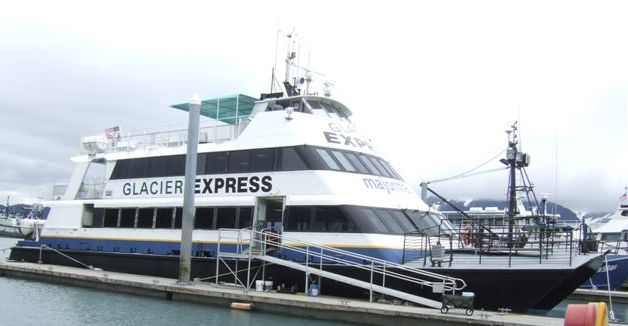 |
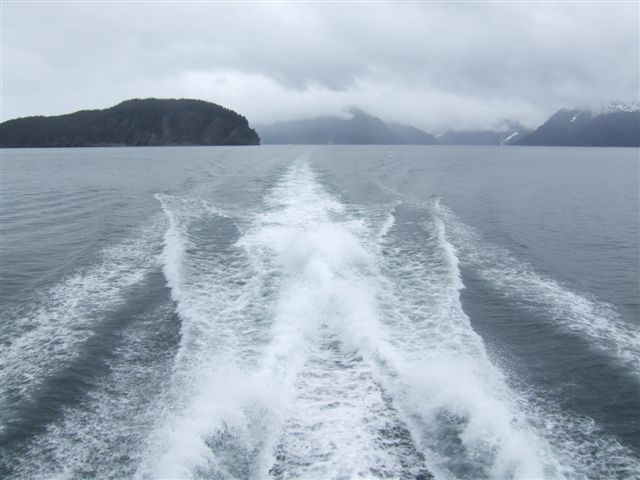 |
There is a normal boat and a catamaran which does the same trip in two hours
less. That was the only one running today so we didn't have a choice. The
weather was very calm. |
| We viewed several
glaciers. This is a tidewater glacier which comes down to sea level and then
chunks break off ('calve') creating icebergs. I think this is Bear Glacier. | 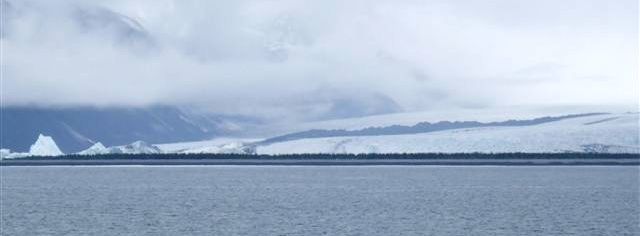 |
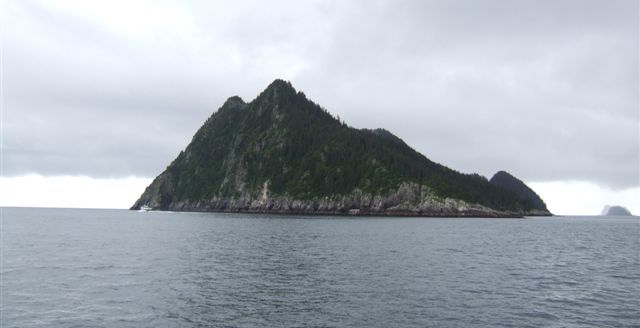 |
This is Cheval Island at the mouth of the fjord. There are dozens of small
islands full of bird life. |
| We did get to see a whale
but it was a bit elusive. I did see the tail go up as it dived but not long
enough to photograph. This is a humpback. | 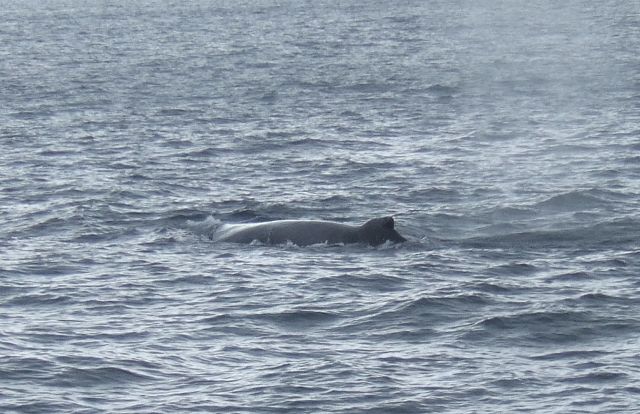 |
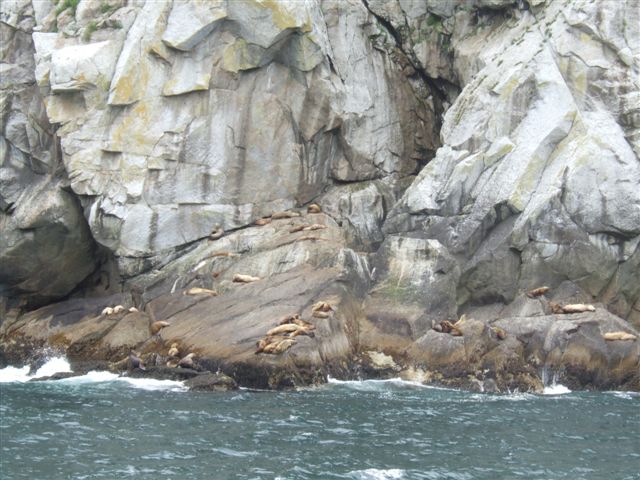 |
The captain was good at spotting wildlife and there was also a park ranger
on board who talked about what we saw. These are harbour seals. We also
caught a glimpse of a sea otter. |
| A bit further on there
were Steller sea lions. They are quite a lot larger. They are now endangered
and the population here has fallen from a few thousands to a few hundred. | 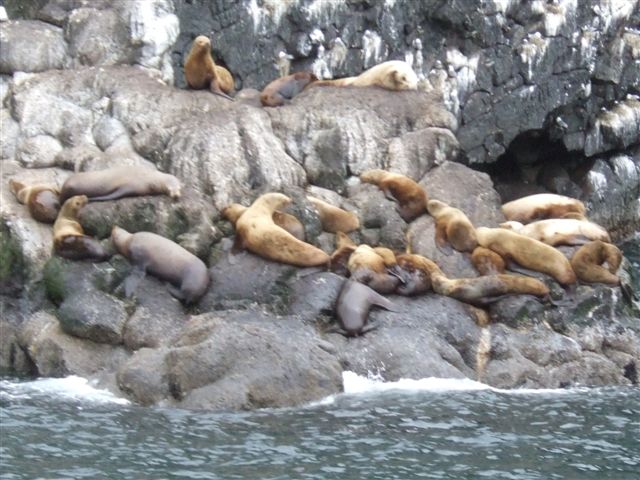 |
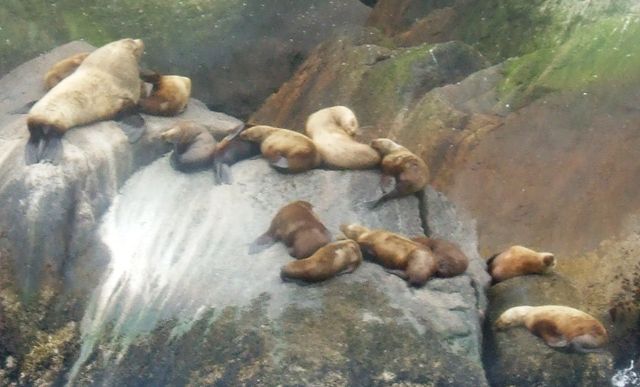 |
They aren't sure of the reasons for the fall but it is thought that climate
change is affecting the food chain and these are part of the food chain. The
Exxon Valdez oil spill also affected this area. |
| They are hunted by orca
(killer whales) but fish stocks have also been falling so their food source
is getting smaller. | 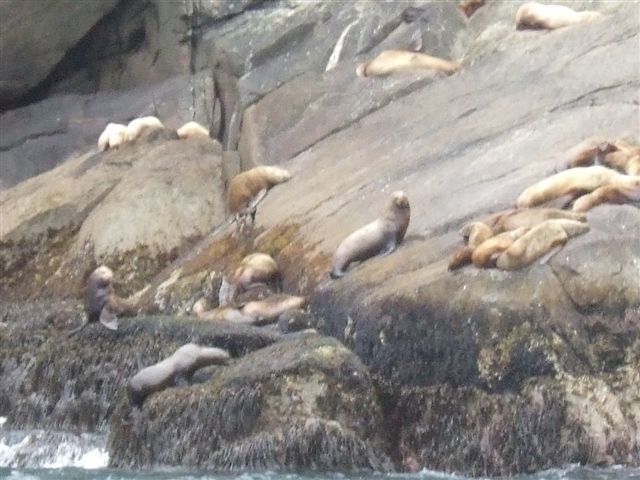 |
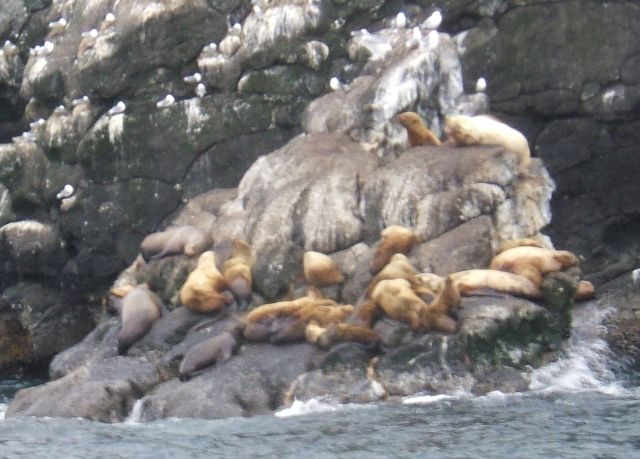 |
We saw several colonies during the day, some were sea lions and others were
harbour seals. It wasn't always obvious at the range we were at. This is
extreme telephoto. |
| The 'bubble' structure of
this odd shaped island is very typical of an island made from underwater
lava flows. This whole area is an active volcanic region and is also very
prone to earthquakes. |  |
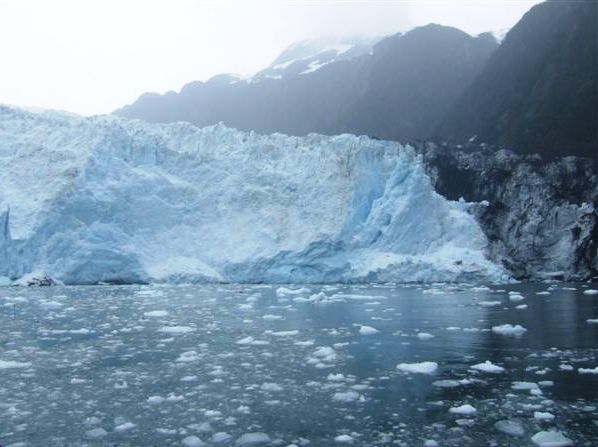 |
Two main tidewater glaciers are visited by the trips. This is Holgate
Glacier which they visit when the floating ice at Ailik Glacier is too dense
or the weather conditions are too poor (mainly mist). |
| When we stopped it was
very quiet but you could hear the glacier move and hear loud cracks as bits
broke off. | 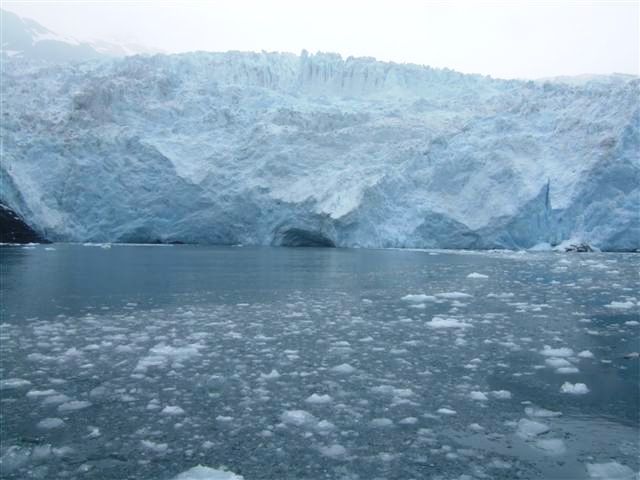 |
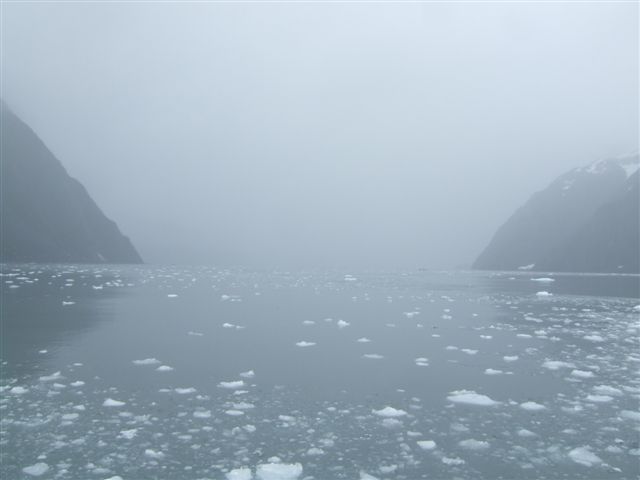 |
Visibility was not good as the near freezing water and absence of wind in
the sheltered fjord makes for dense fog. |
| The captain was quite a
character. A real Captain Hook having lost both hands in an accident.. | 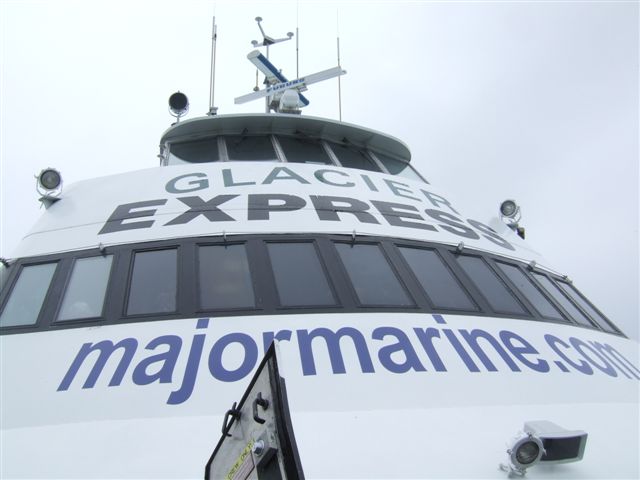 |
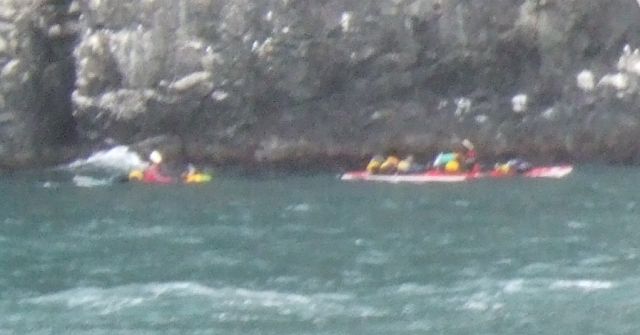 |
Sea kayaking to me falls into the category of hazardous sport - in the
extreme. It had taken us four hours to reach here in a catamaran at 30
knots. These folk may well have been on a five day trip we saw advertised. |
| There were thousands of
seabirds most of which we could not name. However we did see some puffins
for which the area is famous. | 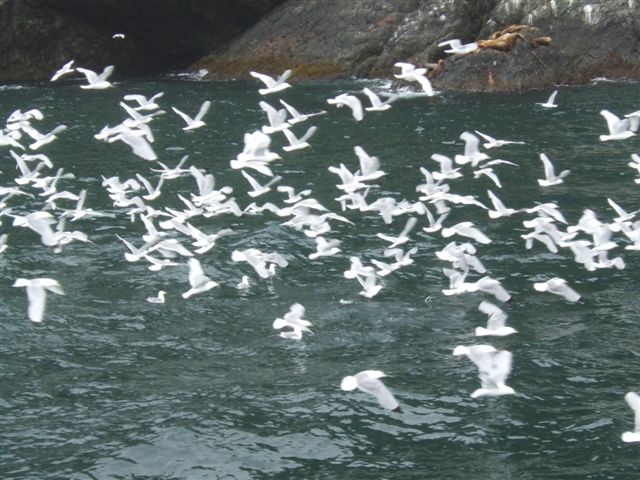 |
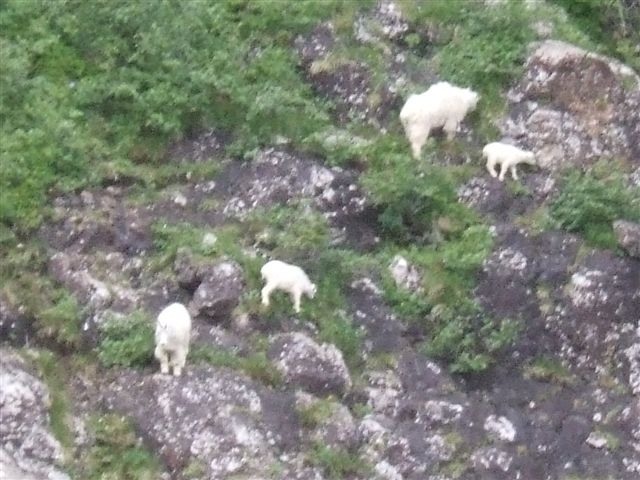 |
You do need to have eagle eyes to spot these mountain goats. We struggled
even when we were told where they were. They are a couple of thousand feet
above the sea and it was almost vertical. |
| On the way back now, and
this rock has a marker beacon and a weather station on it (plus a few
seals). You can look at the data it records on the internet and see what the
weather is doing in this part of Alaska. | 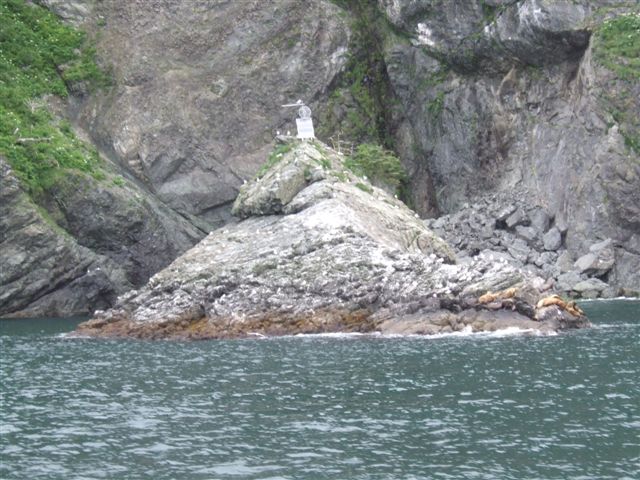 |
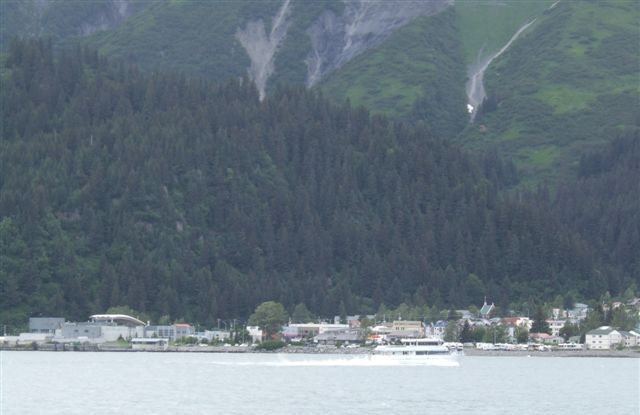 |
Back to Seward which nestles beneath some pretty high mountains. |
| The population is only a
few thousand in the winter but hundreds of RVers arrive in the summer, and
then there are the cruise ships. | 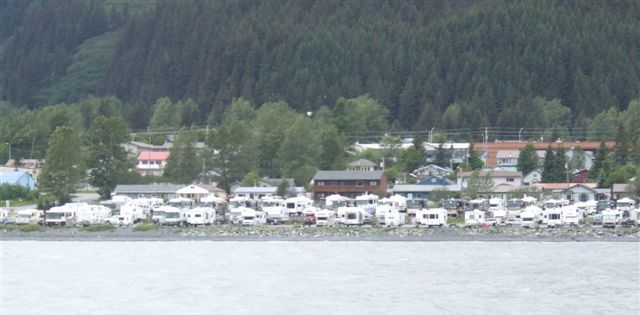 |
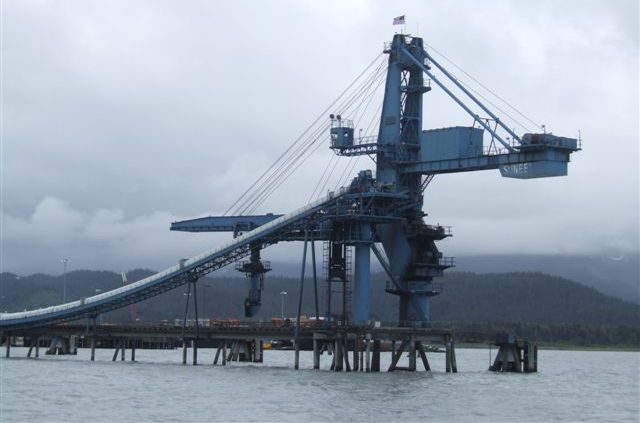 |
They do export coal from this port. It takes 930 coal wagons to fill a ship.
One comes about once a month. |
| An odd fishing boat which
looked most unstable. It was almost as tall as it was long. It is a local
boat but many people and companies here have Russian names. This boat is a
'long liner'. | 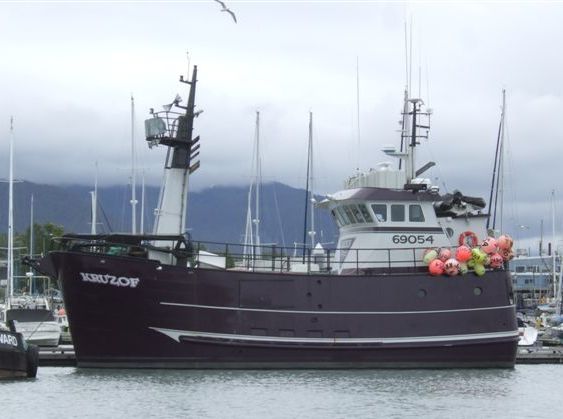 |
|